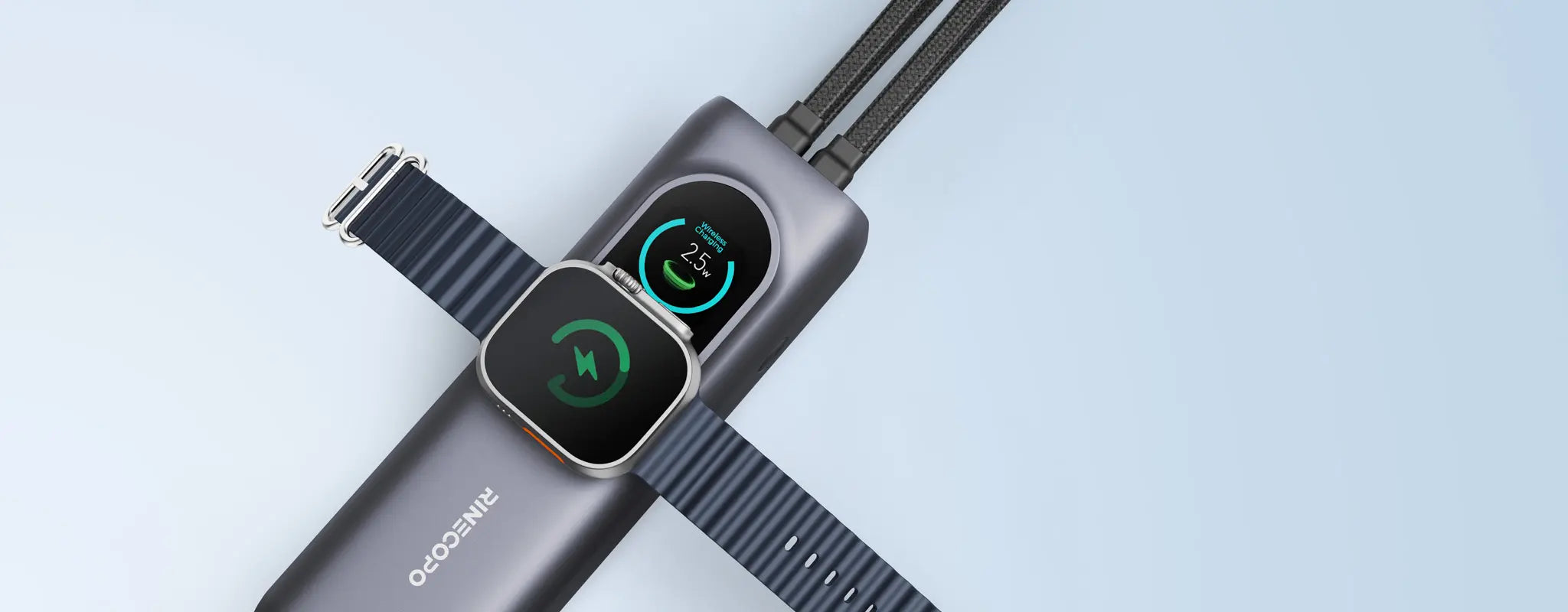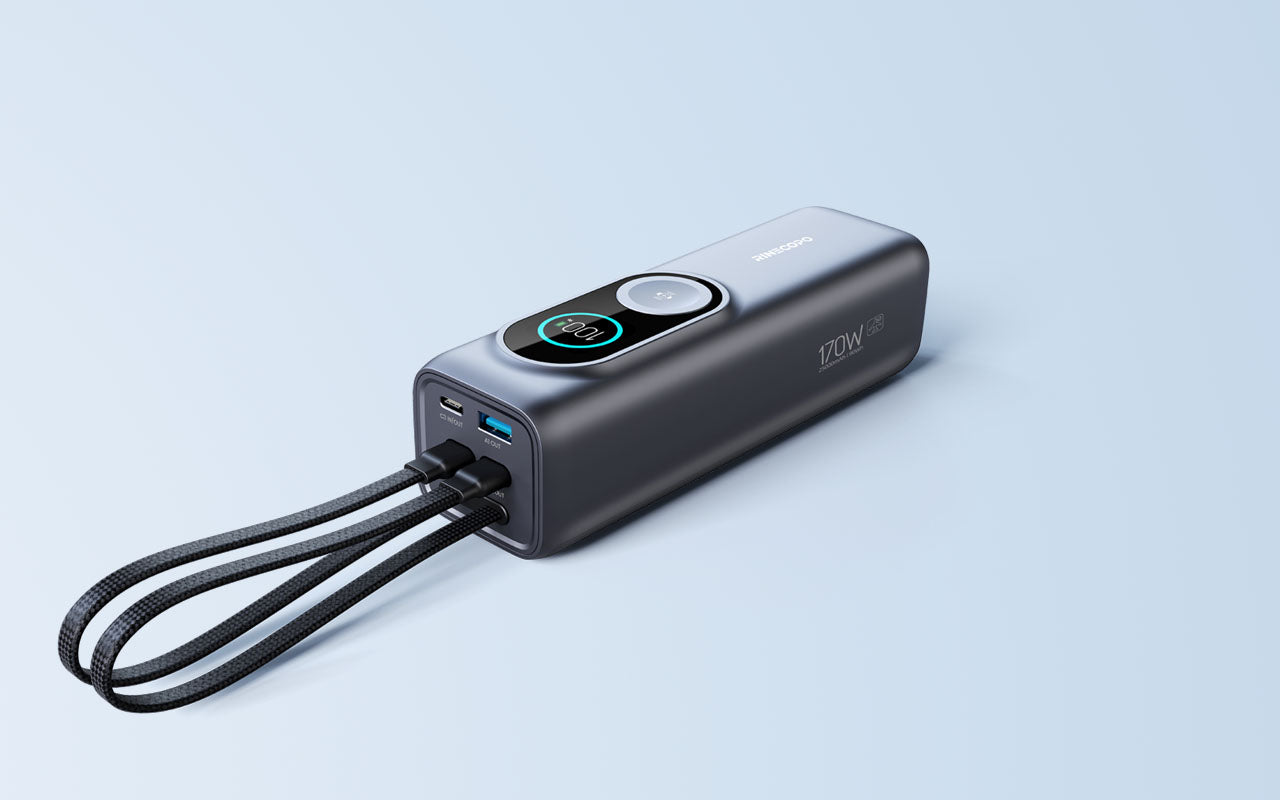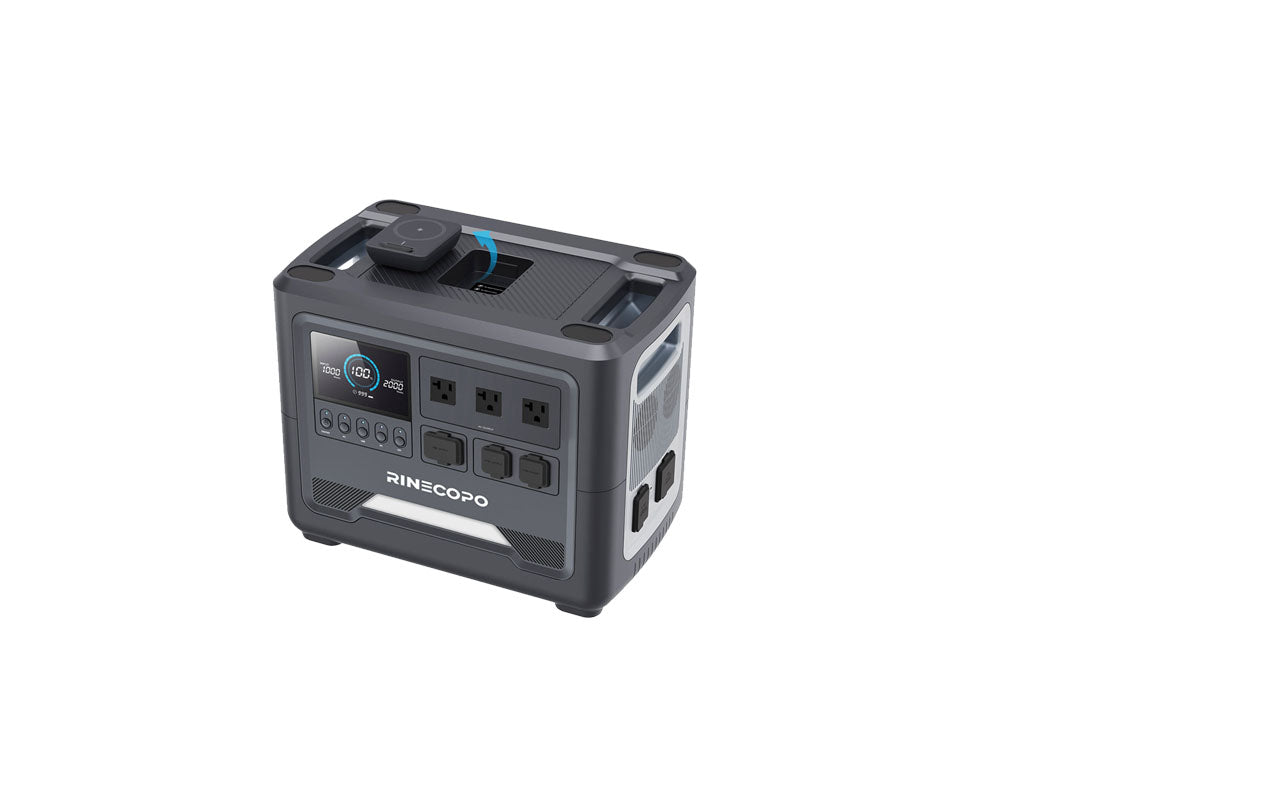
Choosing the right power bank is crucial. A higher capacity means more charging power, but also larger size and heavier weight. Smaller power banks are more portable but may not meet all your power needs.
Today, 10,000 mAh and 20,000 mAh power banks are the most common options. For those who need longer battery life or want to charge multiple devices, higher-capacity power banks are also worth considering.
Understanding Power Bank Capacity
Power bank capacity is measured in milliamp-hours (mAh) and indicates how much energy it can store and how many times it can charge your devices. Accounting for energy loss during voltage conversion and transfer (about 20%–30%):
-
10,000 mAh: effective capacity around 7,000–8,000 mAh
-
20,000 mAh: effective capacity around 12,000–14,000 mAh
-
High-capacity options (like 25,000 mAh): effective capacity up to 17,500–20,000 mAh
What Devices Can They Charge?
10,000 mAh
-
Smartphones: 1.5–2 full charges
-
Wireless earbuds: 10–15 charges
-
Smartwatches: 15–20 charges
-
Tablets: nearly a full charge
20,000 mAh
-
Smartphones: 3–4 full charges
-
Tablets: 1.5–2 full charges
-
Laptops (USB-C PD supported): can charge lightweight laptops
-
Accessories: 20–40 charges
For users who are out for extended periods or need to charge multiple devices, a higher-capacity power bank (like 25,000 mAh) provides more energy and multiple charging ports, making it a great upgrade for travel or outdoor use.
Key Differences
| Feature | 10,000 mAh | 20,000 mAh | 25,000 mAh |
|---|---|---|---|
| Effective Capacity | ~6,000–7,000 mAh | ~12,000–14,000 mAh | ~17,500–20,000 mAh |
| Smartphone Charges | 1.5–2 | 3–4 | 4–5 |
| Portability | Compact, lightweight | Larger, heavier | Slightly heavier, fits in backpack |
| Ideal Use | Daily short trips | Travel, multiple devices | Extended travel, multiple devices, outdoor use |
How to Choose
-
10,000 mAh: Best for daily use, light charging needs, and portability
-
20,000 mAh: Ideal for frequent use, multiple devices, or long trips
-
25,000 mAh: Great upgrade for long periods away from power, outdoor activities, or charging multiple devices
FAQs
-
Is 25,000 mAh too big?
It’s slightly heavier but offers large capacity, perfect for travel or outdoor use. -
Is 10,000 mAh enough?
Yes, for daily short trips or light charging needs. -
How long does a 20,000 mAh power bank last?
Usually 1–3 days, depending on the number of devices being charged. -
Which one should I choose?
It depends on your charging frequency, number of devices, and portability needs. For daily commuting, go with 10K; for multiple devices or travel, choose 20K; for long trips or extended outdoor use, consider 25K.
Recent Posts
Blog Tags
Power Banks: Your Pocket-Sized Energy Hub That Keeps the World Connected
At its core, a power bank is a portable electronic device that integrates a rechargeable energy cell (typically lithium-ion or lithium-polymer), charging circuitry, and input/output ports.
Its primary role is simple: to store electricity and provide power to your devices when you’re away from a wall outlet.
Best Power Bank Buying Guide: How to Choose the Right Portable Charger for Every Need
The capacity and portability of a power bank are always in direct conflict. More power inevitably means more weight and bulk. When choosing the right one, it all comes down to your actual usage scenarios:
Best Power Bank for iPhone 17: RINECOPO 25,000mAh 170W Portable Charger
That’s where the RINECOPO 25,000mAh 170W power bank steps in — the ultimate power bank for iPhone 17 and other high-performance devices.





